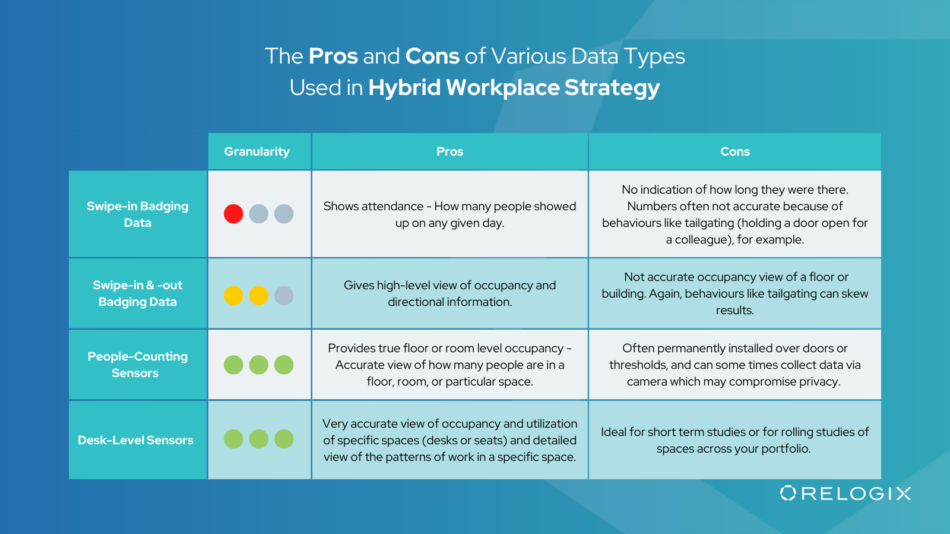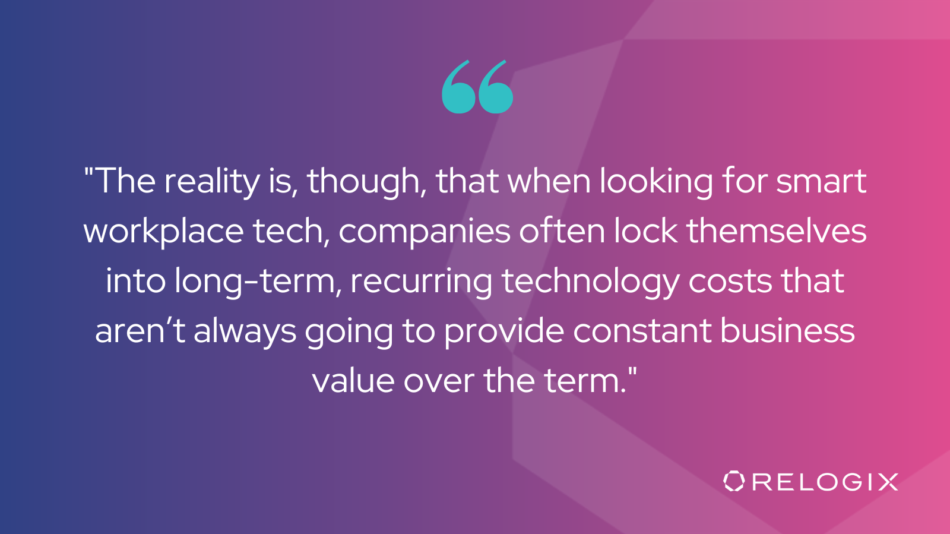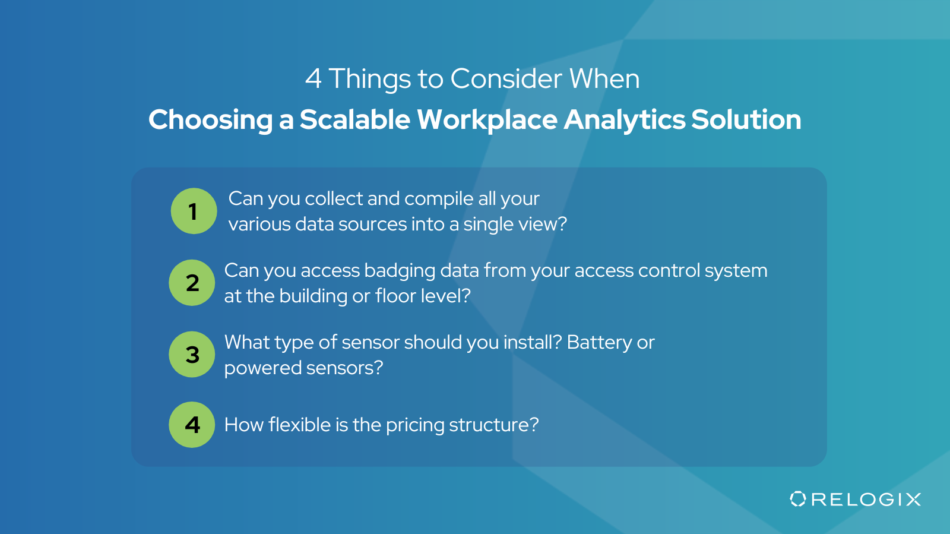How to Choose a Hybrid Workplace Solution that Aligns Business Needs, Data Sources, and Costs
It happens to the best of us—we’ve all signed long-term contracts for a service or technology that provides its greatest benefits early on. For the rest of the term, you just have to accept the costs of something you’re not always using to its fullest extent. Lots of businesses fall into this trap when it comes to CRE technology. What if your workplace technology’s pricing could be as flexible as you are? As your business is?
In this return-to-office period, getting people to actually come back to the workplace has not been easy. With “work from anywhere” taking hold, giving the hybrid workplace a compelling purpose is a significant challenge for most companies. How do you engage employees and create a collaborative environment that employees will choose over everywhere else?
Answering this is especially difficult when you consider that working styles and preferences will likely continue to evolve into the foreseeable future. In response, workplaces need to be flexible, with agile design and space types. They need elasticity in terms of amount and location of space. This means that any occupancy analytics solution you use to collect data needs to be as flexible and elastic as your workplace—even, and especially, when it comes to pricing.

Does Your Workplace Optimization Analytics Solution Align Your Data Sources, Business Needs, and Costs?
These days, it’s crucial to source smart and flexible technology solutions when it comes to gathering workplace data. Your solutions need to align your data sources with your business needs, and ideally, with cost.
Getting a true picture of how your workspaces are being used is a must-have for companies trying to provide a hybrid workplace that engages and connects your employees. You can collect occupancy and utilization data from a variety of sources, each giving different levels of granularity. All of the sources listed above can play a part in producing insights and evidence that can help you make business decisions and evaluate your hybrid workplace experience strategies.

The reality is, though, that when looking for smart workplace tech, companies often lock themselves into long-term, recurring technology costs that aren’t always going to provide constant business value over the term. This may look familiar: you’ve signed a 1- or 2-year contract for a particular tool. After 6 months of using it to its fullest capacity, you’re ready and able to make key decisions to create an effective hybrid working strategy. A great alignment of technology, costs, and business outcomes!
The catch is: from that point on, your needs for granular occupancy and utilization data are going to vary over time. This means there will be periods of collecting—and paying for—highly detailed data that you don’t need at that moment. Canceling the contract isn’t a great solution, because your need for that data will most certainly come back, time and time again.
Zooming In and Out on Your Data—and Costs
To avoid getting stuck in that situation, it’s best to find an occupancy analytics solution will allow you to “zoom in” and “zoom out”: you’re going to want to zoom in on granular data for a period of time to make key decisions, and then zoom out to less granular data to monitor your floors or spaces. The key is: the costs of this data collection should be aligned with the granularity of the data—while never losing track of your entire data history.
Hybrid workplaces and their workplace strategies are always complex, no matter the size of your business—there will be areas where you’ll need ongoing access to highly granular data. This is especially the case if daily live views of the hybrid workplace experiences are a must. In this scenario, you’ll have an ongoing alignment of technology, business needs, and costs.
However, a large part of your portfolio may also require a more agile approach to occupancy and utilization data. Maybe some areas only need to be monitored at a more general level for periods of time. This is where you’ll benefit from a flexible approach that allows you to zoom in and out on the data—and ideally, only pay for what you use.

Choosing a Scalable Workplace Analytics Solution: Things to Consider
- A single pane of glass: it’s essential to be able to collect and compile data from all your various data sources. This helps to reduce your dependency on any specific source, while giving you the ability to track your entire data history.
- Access to badging data: do you have the ability to collect badging data from your access control system at a building or floor level? Can it be brought into your single pane of glass?
- Battery or powered sensors: what type of sensor should be installed? Should the installation be permanent? Should they be easy to move around? How complicated is the installation?
- Pricing structure: how flexible is the pricing plan? Can you closely pair costs with business needs over time? Look for flexible terms where business value and costs are tightly linked.
Flexibility is King: Choosing Wisely
Being in full control of your occupancy and utilization data will be a critical part of your hybrid workplace experience strategy. Done well, tools like sensor technology can give you data that will inform key decisions and uncover new ways to increase the effectiveness of your space and the productivity of your people.
Not having the flexibility to align your business needs with the pricing of your CRE technology is costly over time. It can dramatically hinder your ability to get critical insights across all your floors, buildings, and locations. Aim for an analytics solution that allows you to “zoom in” and “zoom out” across your hybrid workplace, with a pricing structure that’s just as flexible.

